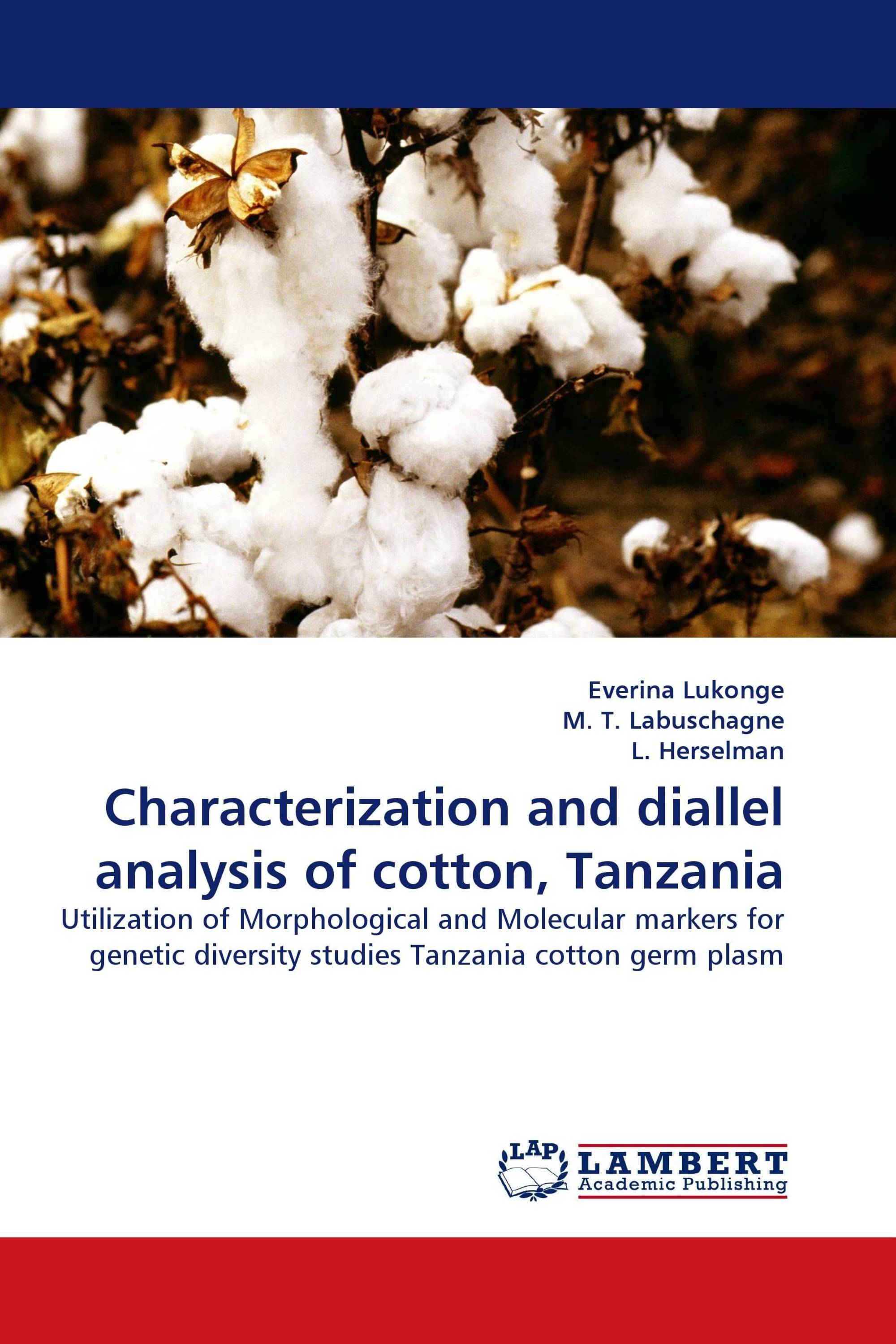Characterization and diallel analysis of cotton, Tanzania
Utilization of Morphological and Molecular markers for genetic diversity studies Tanzania cotton germ plasm
€ 79,00
Thirty cotton varieties were studied. The objective was to evaluate genotypes through oil content, fatty acids, morphological and molecular characteristics. Statistical procedures were performed using different computer programmes. Stability was analysed using stability measures, (Shukla, Wricke, Lin and Binns, Eberhart and Russell) and the AMMI analysis. Average oil content was 20.23%. Polyunsaturated:saturated fatty acid ratio was 2:1. NTA Varieties NTA93-21 and NTA 93-15 were the best for agronomical characteristics. Genetic distances for morphological analysis ranged from 0.18 to 0.80. AFLP analysis had high genetic similarities. Low genetic similarity was observed on agronomical compared to AFLP markers. Variety NTA 93-21 outperformed others while Super Okra performed poorly for many characteristics. Combining ability indicated significant variation in GCA estimates among parents. Genotypes with positive GCA for yield components exhibited negative GCA for fibre quality. Positive heterosis for boll weight was observed for more than 90% of the combinations and heritability was moderate to high. Wricke, Shukla and ASVT stability procedures identified similar stable genotypes.
Book Details: |
|
|
ISBN-13: |
978-3-8433-7529-0 |
|
ISBN-10: |
3843375291 |
|
EAN: |
9783843375290 |
|
Book language: |
English |
|
By (author) : |
Everina Lukonge |
|
Number of pages: |
248 |
|
Published on: |
2010-12-30 |
|
Category: |
Genetics |
